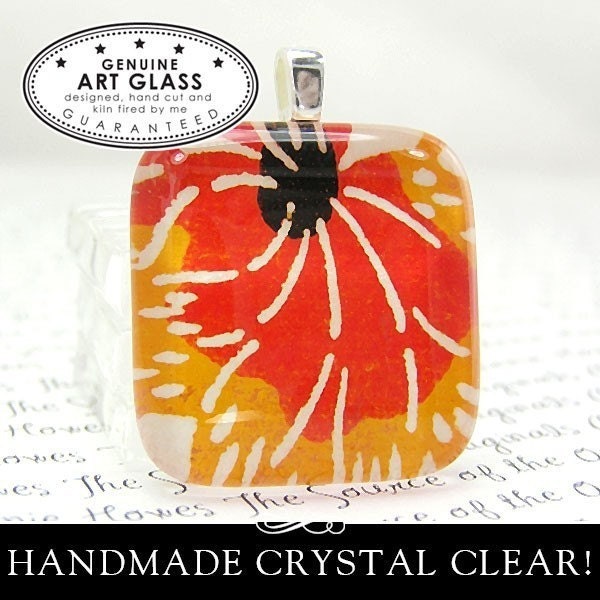
If you’re purchasing clear glass pieces for your creative projects, the two basic types of glass you would encounter are float glass and rolled glass. Most of the economically priced glass available is made overseas in China by large manufacturing companies that produce thousands of glass tiles each day and is made from float glass. Float glass is made by floating molten glass onto molten tin, hence the name. It's a process that imparts some of the metal properties into the glass sheets which can discolor or dull the glass. And while that glass may be hand cut and kiln fired, it’s 99.9% likely the glass isn’t hand cut and kiln fired by the seller. Just because the seller claims the glass is handmade, and I’m sure it is handmade by someone somewhere, that doesn’t mean it’s handmade by them.
Similarly, glass that is stated as “designed” by the seller doesn’t mean the seller made the glass. It just means they placed an order with a manufacturer in China who makes glass tiles to order. It’s a rather deceitful way of not being straightforward about who makes their glass because they want the customer to assume they made the glass themselves. For example, if you place a custom order with me for glass and I cut and fired your glass, would you claim you made the glass? Probably not. You gave me dimensions of the size you wanted and I cut and kiln fired the glass for you. The glass, however, is still handmade. Did you design the glass? If instructing glass to be cut to a 1” square is called “designing” then I suppose you did.

Why should you be concerned with any of this? Because there are obvious visible differences in the glass you’ll most likely receive if you purchase glass not handmade (ie. not hand cut and kiln fired) by the seller (float glass) vs. glass handmade by the seller (rolled glass). If you are spending your time and talents on creating beautiful jewelry or other pieces of art, wouldn't you want to use the most beautiful glass available?
What is the difference between the glass types? There are basically two different glass types available for glass pendants: float glass, and fusible glass. Float glass is typically used for tiling your kitchen or bath and architectural installations. Thin float glass is also used in soldered charms, and the glass you put your photos behind in a picture frame is also float glass. The float glass sold for use in glass pendant making is a low-iron glass. Low iron means the amount of green (iron) in the glass is reduced or removed. I, too, offer this economical glass as an alternative when high quality glass isn't important. While the glass is clear and colorless, it lacks the spectrum of light that you would see in crystals. It’s dull and flat and lifeless. And cheap.
The alternative to dull and lifeless glass is called rolled art glass, which is the type of glass used primarily in glass fusing. This is the good stuff, and not just because I said so. Rolled glass for fusing has such high clarity that it’s very much like crystal in its appearance. It shines, it sparkles and is alive with all spectrum of light. It’s breathtaking by comparison. Each piece is a work of art. Rolled glass is the same type of raw glass used in large fused glass platters, and glass vases, and such. It's art glass and is specifically created for use in fine art pieces.
How can you tell the glass you’re buying is quality art glass handmade by the seller? First, you can ask. I believe most sellers of glass tiles for jewelry and crafting are decent honest people and will give you an honest answer if asked outright about the glass they’re selling. Ask what type of glass it is, if it’s rolled glass (high clarity, used for fusing) or float glass (low clarity, lusterless used for architectural installations). Ask if it’s imported glass, or if they cut and fired the glass themselves on site. I don’t think anyone would be offended by these questions and most glass artists are more than happy to discuss their craft.

If you still suspect the glass is not handmade by the seller, ask if the artist can custom fire glass to meet your specifications. If they don’t make custom cut glass and only offer specific sizes, they probably are importing their glass and you should continue your search for quality handmade glass elsewhere.
If you have purchased glass and are concerned that it's not the quality of glass it was advertised to be, check to see if the glass is smooth on both sides of the piece. If so, the glass is float glass and was most likely not handmade by the seller.
Support true handmade supplies made by the artist who created the products you're purchasing. Your finished pieces will radiate with life!







No comments:
Post a Comment